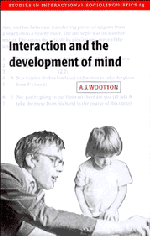Book contents
5 - The emergence of two request forms
Published online by Cambridge University Press: 24 August 2009
Summary
A central proposal of the two prior chapters has been that, at around the age of 2, the child's capacity to make use of sequential knowledge informs her behaviour in request sequences in important ways. Amy's actions are often bound up with understandings which normally have their basis in the sequences of interaction which precede these acts. In chapter 3 I showed how these understandings have a bearing on the child's use of imperatives, while in chapter 4 it became apparent that certain forms of distraught behaviour on the part of the child come to be intelligible once the nature of relevant understandings within earlier interaction has been traced. In these ways the child treats such understandings as a relevant context for the actions in which she engages; indeed one might say that in orienting to such understandings the child's capacity to respect aspects of the context in which she acts undergoes a major transformation when contrasted with her behaviour at, say, 16 months. She is now in a position to take account of, and adjust her behaviour in the light of, local, sequence specific knowledge. The sequence in which she is involved is thus permitted to inform and shape what she does, and what she does can display a sensitivity to these local circumstances.
These same observations and arguments also have a bearing on an important general question that has not as yet been overtly raised.
- Type
- Chapter
- Information
- Interaction and the Development of Mind , pp. 138 - 174Publisher: Cambridge University PressPrint publication year: 1997



